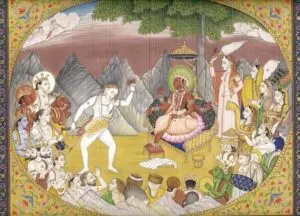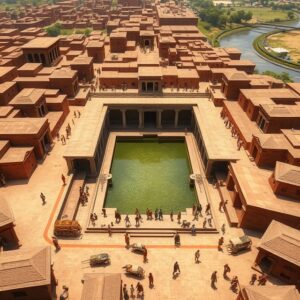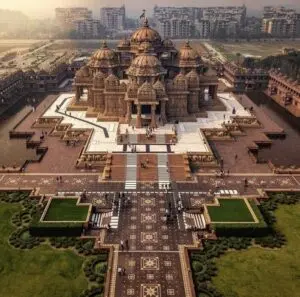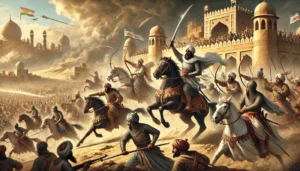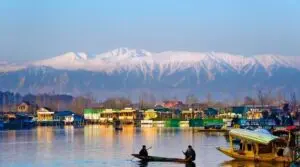The Kailasa Temple: Shiva’s Mountain Brought to Life in Stone
The Kailasa Temple, part of the Ellora Caves in Maharashtra, India, is one of the most remarkable ancient structures in the world. Dedicated to Lord Shiva, it is considered a masterpiece of rock-cut architecture and has intrigued historians, archaeologists, and engineers for centuries. Below is an in-depth exploration of various aspects of this temple, including its origins, construction techniques, religious significance, and historical context.

1. What is the Kailasa Temple?
The Kailasa Temple (Cave 16) is a monolithic rock-cut temple located at the Ellora Caves complex. Carved from a single rock, it is dedicated to the Hindu god Shiva and represents Mount Kailasa, his mythical abode. The temple is part of the UNESCO World Heritage site of Ellora Caves, which houses a series of Hindu, Buddhist, and Jain temples and monasteries built between the 6th and 10th centuries CE.
Key Features:
- Monolithic Structure: Carved from one massive volcanic basalt rock, Kailasa Temple at Ellora is considered the world’s largest monolithic rock-cut structure.
- Dravidian Architecture: The temple follows the Dravidian style typical of Southern India, with pillared halls, shrines, and courtyards.
- Mythological Depictions: Intricate sculptures narrating episodes from the Ramayana, Mahabharata, and the Puranas.
- Size: The Kailasa Temple is 300 feet long and 175 feet wide, and it’s carved out of a scarp that’s over 100 feet high.
- Location: The Kailasa Temple is located in Cave 16 of the Ellora Caves.
2. Historical Background
When was it built?
The Kailasa Temple was built in the 8th century CE during the reign of the Rashtrakuta dynasty, under King Krishna I (circa 756-773 CE). Historians believe that construction started around the mid-8th century and may have taken approximately 18 to 20 years to complete.
Who built it?
The Rashtrakuta king, Krishna I, is credited with commissioning the construction of this grand temple. The Rashtrakuta Dynasty (753–982 CE) ruled over large parts of present-day Karnataka, Maharashtra, and Andhra Pradesh. The temple reflects the influence of both local artisans and religious practices of the time, highlighting the patronage of art and religion by the Rashtrakutas.
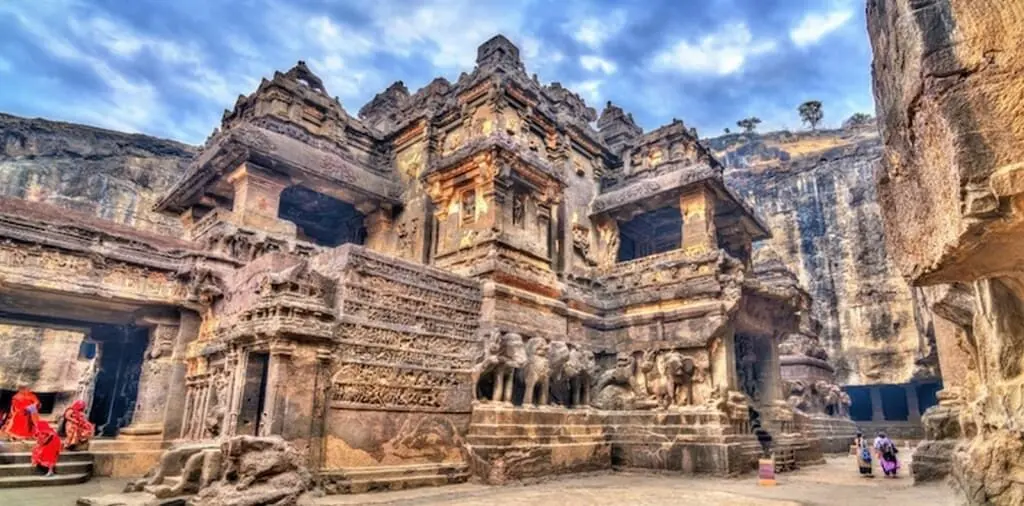
Why was it built?
- The Kailasa Temple was constructed as an ode to Lord Shiva and to symbolize Mount Kailasa, his sacred mountain. Its construction may also have been an assertion of the Rashtrakuta dynasty’s power and devotion to Shaivism, a prominent form of Hinduism. Additionally, it showcased the dynasty’s architectural prowess and served as a religious, cultural, and political statement.
- The temple’s grandeur could also be seen as a competition or response to the Pallava rulers of South India, who had created impressive rock-cut temples in Mahabalipuram. Krishna I may have wanted to exceed the Pallavas’ achievements in temple-building.
3. Incredible Construction Techniques
The most astonishing aspect of the Kailasa Temple is its construction method. Unlike conventional buildings, this temple was carved from a single piece of rock, top-down, instead of being constructed from the ground up. This method is extremely rare and requires immense planning and precision.
1. Carving from the Top Down:
- The Kailasa Temple was not built but excavated downward from a massive volcanic basalt rock. Starting from the top and working downwards allowed artisans to avoid scaffolding and precisely remove material to reveal the temple’s final form.
- Modern engineers are still amazed at this feat, considering the primitive tools—hammers, chisels, and wedges—available during the 8th century.
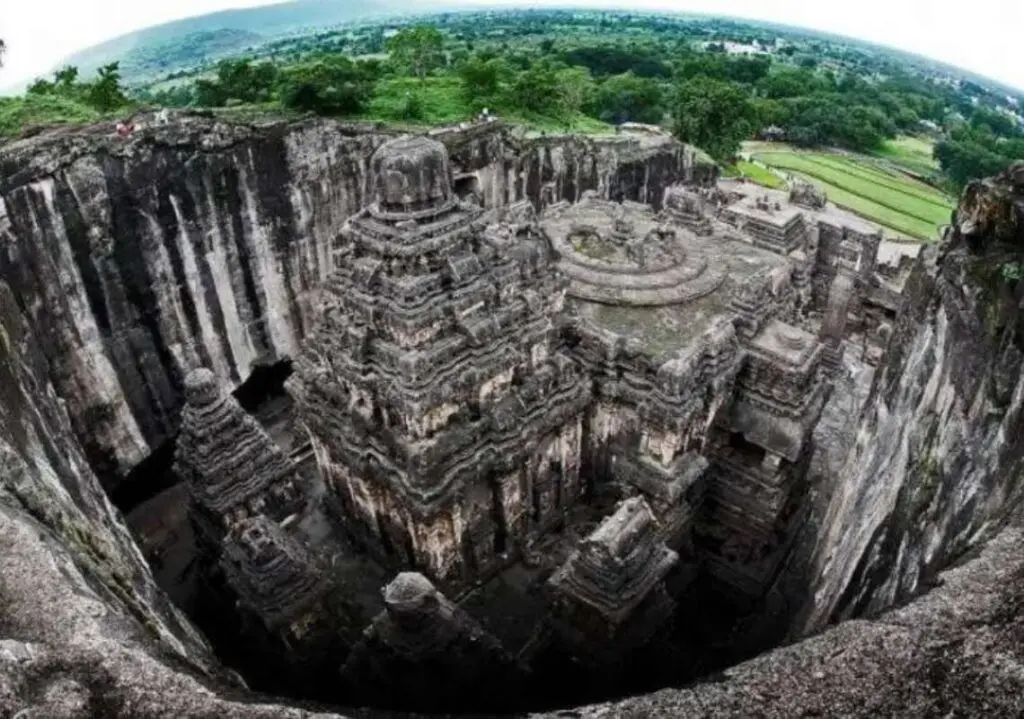
2. Removal of Rock:
- It is estimated that around 200,000 to 400,000 tons of rock were carefully removed over the course of construction. This was done without dynamite or modern machinery, showcasing an incredible understanding of geometry and engineering principles.
- The rock was likely removed in pieces, transported using human labor, and disposed of systematically. This process may have taken years of coordinated effort, possibly employing thousands of workers.
3. Layout and Planning:
- Despite the temple’s massive scale, it was carved with remarkable precision. The alignment, placement of shrines, and sculptures follow traditional Vastu Shastra, the ancient Indian system of architecture, which underscores the mathematical and cosmic principles governing construction.
- Artisans had to visualize the entire structure in their minds before starting to carve since a mistake in planning could have been irreversible.
4. What’s Inside the Kailasa Temple?
Central Features
The Kailasa Temple is not just one structure but an intricate complex of various shrines, courtyards, sculptures, and halls. Let’s break down the key components:
1. Main Shrine of Shiva (Sanctum Sanctorum):
- At the heart of the temple is the Sanctum Sanctorum, dedicated to Lord Shiva, represented by a Shiva Lingam (an abstract symbol of Shiva). This shrine is the focal point of the temple and is surrounded by numerous smaller shrines and hallways for worshippers.
- Above the shrine, there is a massive stone vimana (tower), intricately carved, symbolizing Mount Kailasa, Shiva’s celestial abode.
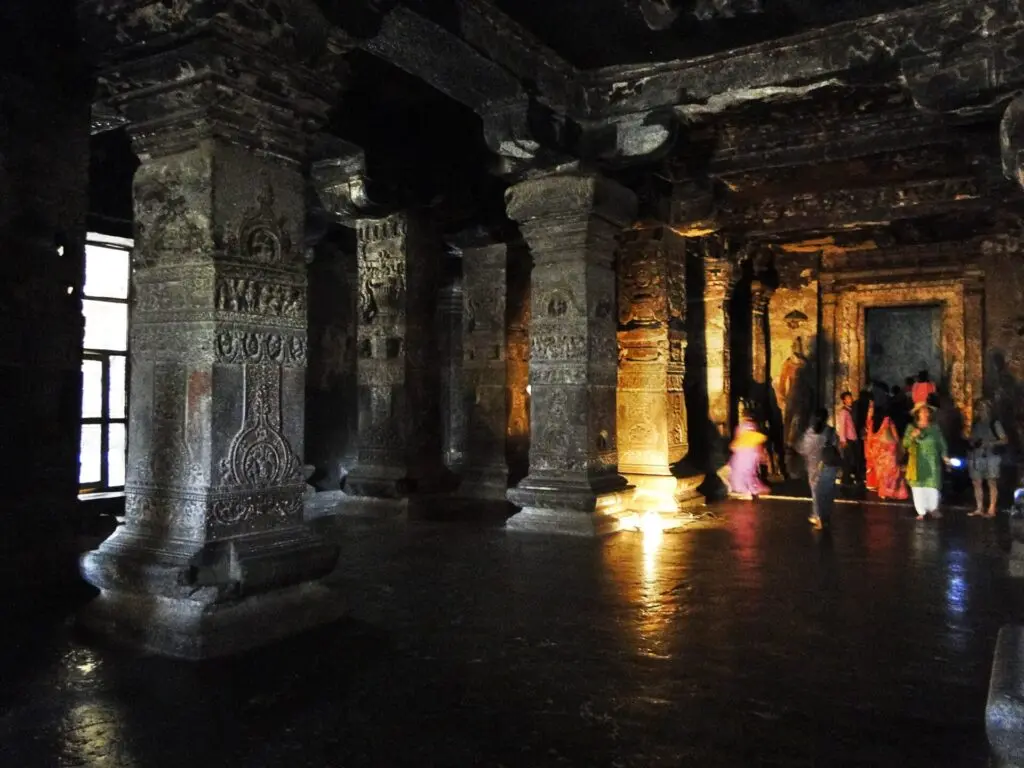
2. Nandi Mandapa (Pavilion of Nandi):
- In front of the main shrine stands the Nandi Mandapa, housing a large statue of Nandi, Shiva’s sacred bull, which symbolizes strength and devotion.
- The Nandi Mandapa is elevated and aligned so that Nandi faces the linga, maintaining the spiritual connection between the deity and his vahana (mount).
3. Gopuram (Gateway):
- The entrance to the temple is marked by a towering Gopuram, a large, intricately carved gateway typical of Dravidian architecture. The Gopuram itself is carved from the same single rock and leads into a spacious courtyard.
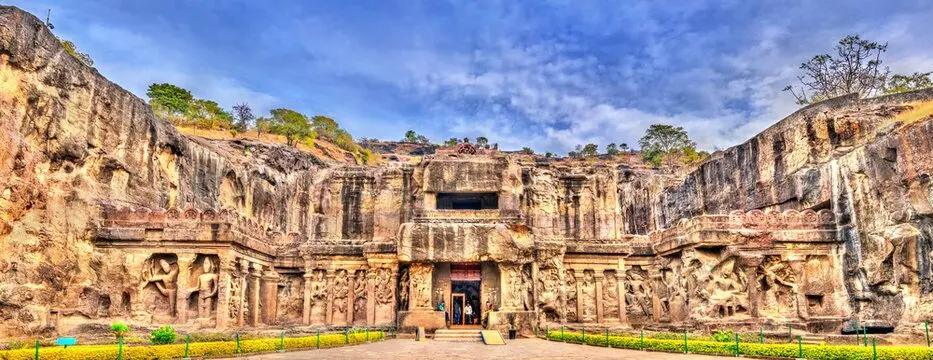
4. Pillared Mandapas:
- Surrounding the main sanctum are several Mandapas (pillared halls), each decorated with carved pillars, deities, and intricate reliefs. These halls were likely used for gatherings, rituals, and processions.
Intricate Sculptures and Depictions:
- The walls of the temple are adorned with intricate carvings that depict scenes from Hindu mythology, including stories from the Ramayana, Mahabharata, and Puranas. These sculptures were meant to inspire devotion and convey moral and religious stories to worshippers.
- Notable depictions include the Ravana shaking Mount Kailasa (from the Ramayana) and various avatars of Vishnu, as well as celestial beings, animals, and mythical creatures.
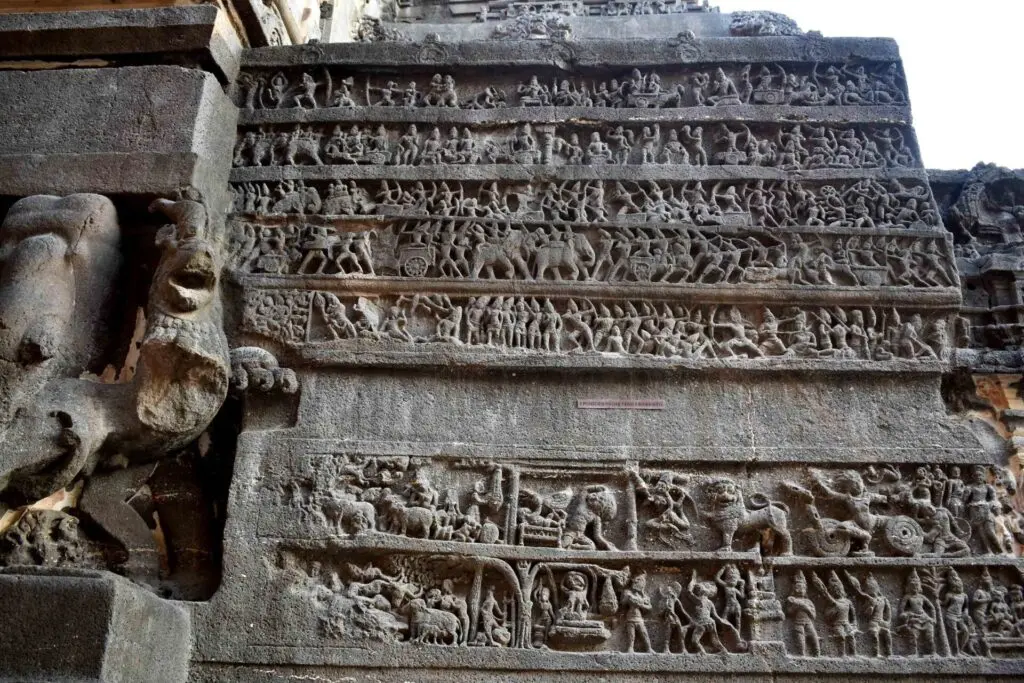
Courtyard and Smaller Shrines:
- The temple complex includes numerous smaller shrines, each carved with the same level of detail. These shrines are dedicated to various deities, including Parvati (Shiva’s consort), Ganesh, Vishnu, and Durga.
- Walkways carved into the rock lead to these smaller shrines, and visitors can also explore the inner courtyards and cloister-like galleries that surround the temple.
5. Symbolism and Religious Significance
The Kailasa Temple is not just an architectural wonder but also holds profound religious and symbolic significance.
- Mount Kailasa Representation: The temple symbolizes Mount Kailasa, considered the spiritual center of the universe and the abode of Lord Shiva in Hindu cosmology.
- Shaivism: The temple serves as a shrine to Shaivism, one of the major sects of Hinduism, and was a place of worship for devotees of Shiva.
- Epics and Deities: The temple’s sculptures depict numerous scenes from Hindu epics like the Ramayana and Mahabharata, reinforcing its connection to Hindu mythology and cosmology. Various deities, including Shiva, Vishnu, and Durga, are carved throughout the temple.
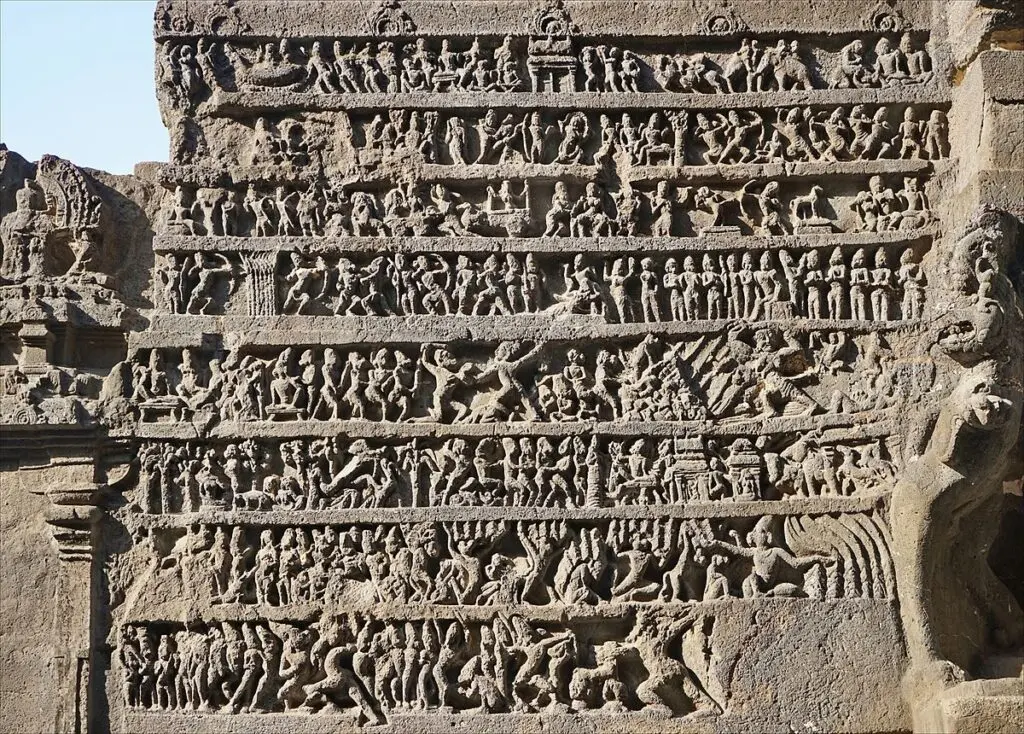
6. Cultural and Historical Importance
A UNESCO World Heritage Site
The Ellora Caves, including the Kailasa Temple, were designated as a UNESCO World Heritage site in 1983 due to their outstanding universal value. The temple is part of a larger complex of 34 caves, comprising Buddhist, Hindu, and Jain monuments that reflect the religious pluralism of India in the early medieval period.
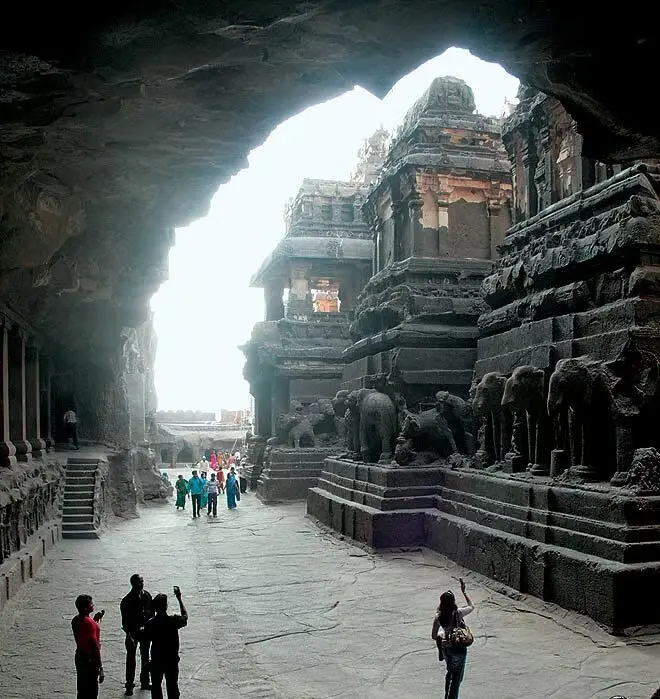
Influence on Art and Architecture
The Kailasa Temple has influenced subsequent Indian temple architecture, particularly the development of monolithic temples and caves in southern India. Its pioneering construction techniques were admired and emulated by later rulers, including those of the Chola and Vijayanagara empires.
7. Mystery and Intrigue
The temple continues to be a subject of mystery for historians and engineers alike. The advanced techniques used in its construction, especially the precision with which the temple was carved, have led some to speculate about the knowledge of engineering, geometry, and astronomy possessed by the builders.
- No Written Records: There are no known contemporary records detailing how the temple was built, which adds to the intrigue surrounding its construction.
- Legends: Local folklore holds that the temple was built in a miraculous short time, in response to a queen’s prayer. While this is not historically accurate, it demonstrates the reverence the temple has inspired for centuries.
- Largest Monolithic Temple: Kailasa Temple is the largest monolithic rock-cut temple in the world.
- Single Rock: It was carved from a single rock over centuries, removing around 200,000 tons of rock.
- Inspiration: The temple served as inspiration for several other rock-cut temples in India, showcasing the Rashtrakutas’ influence on architecture.

